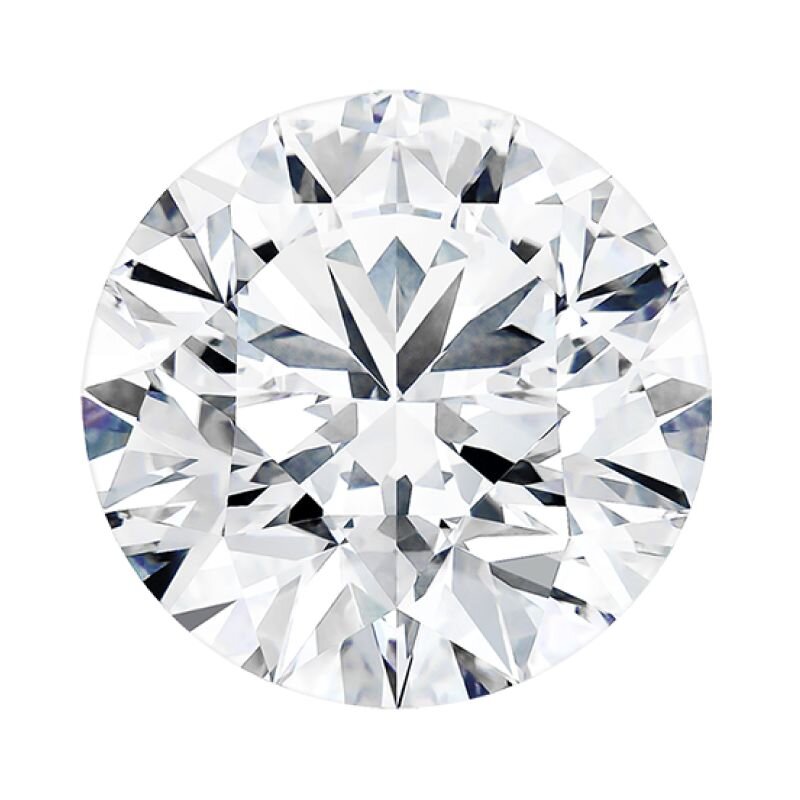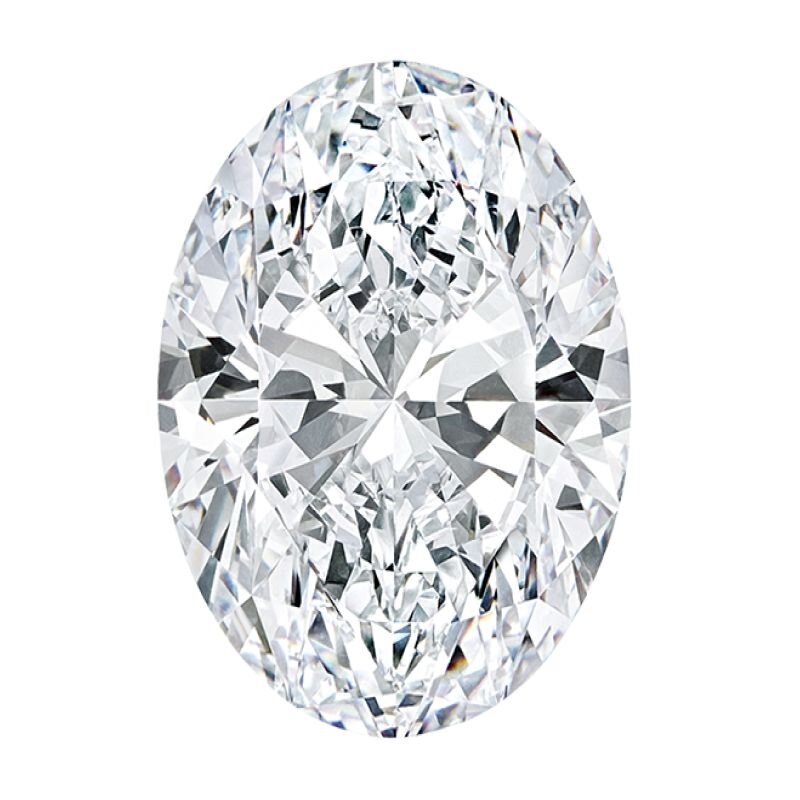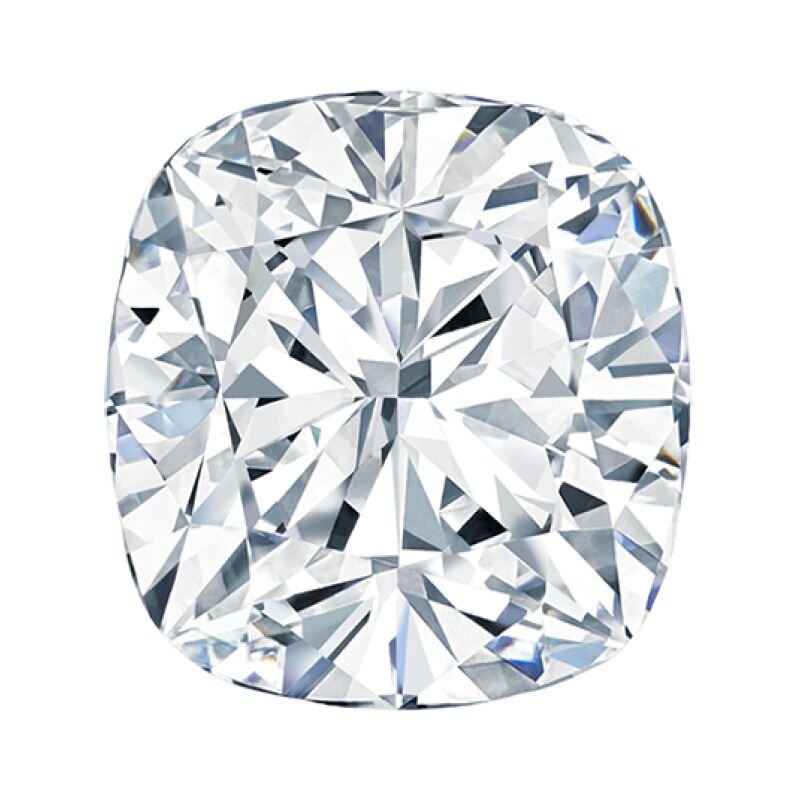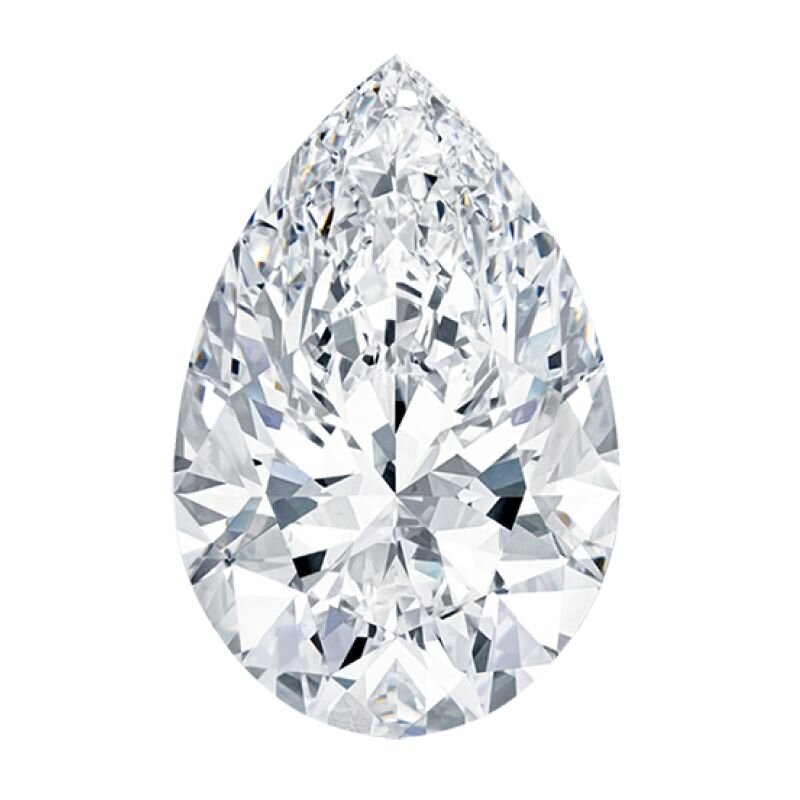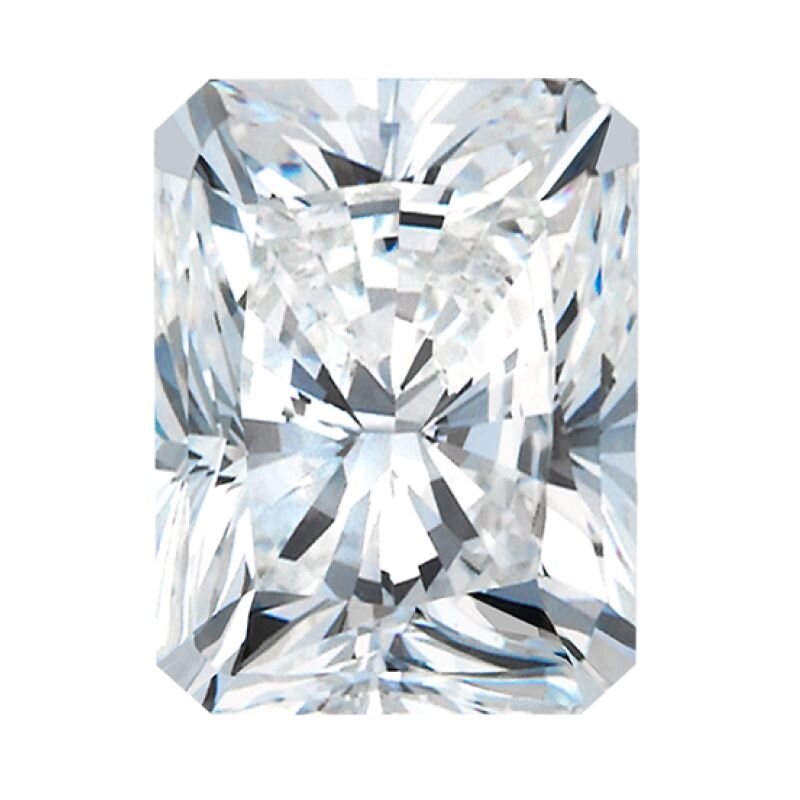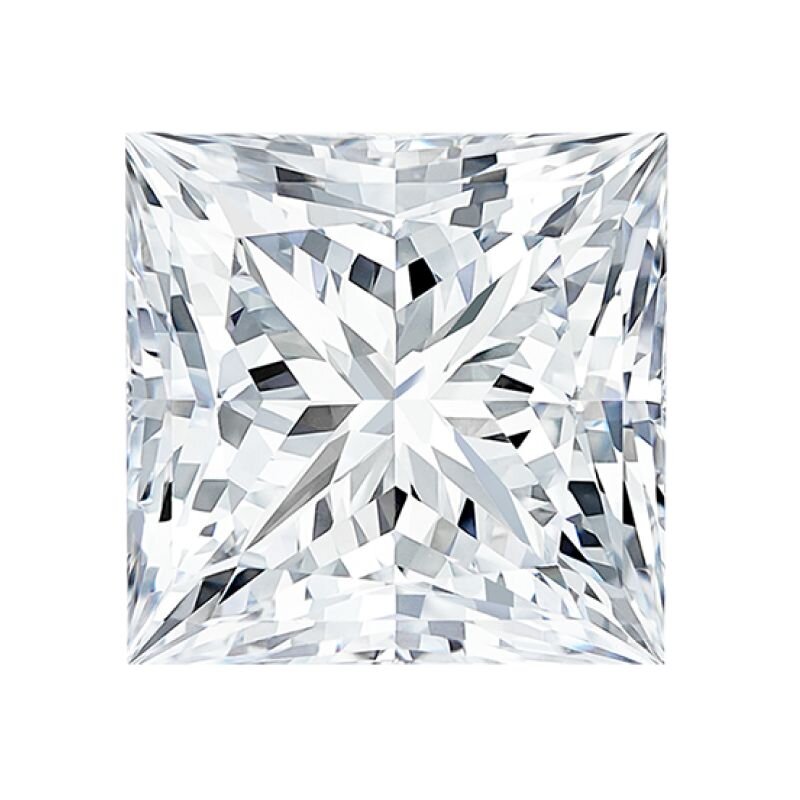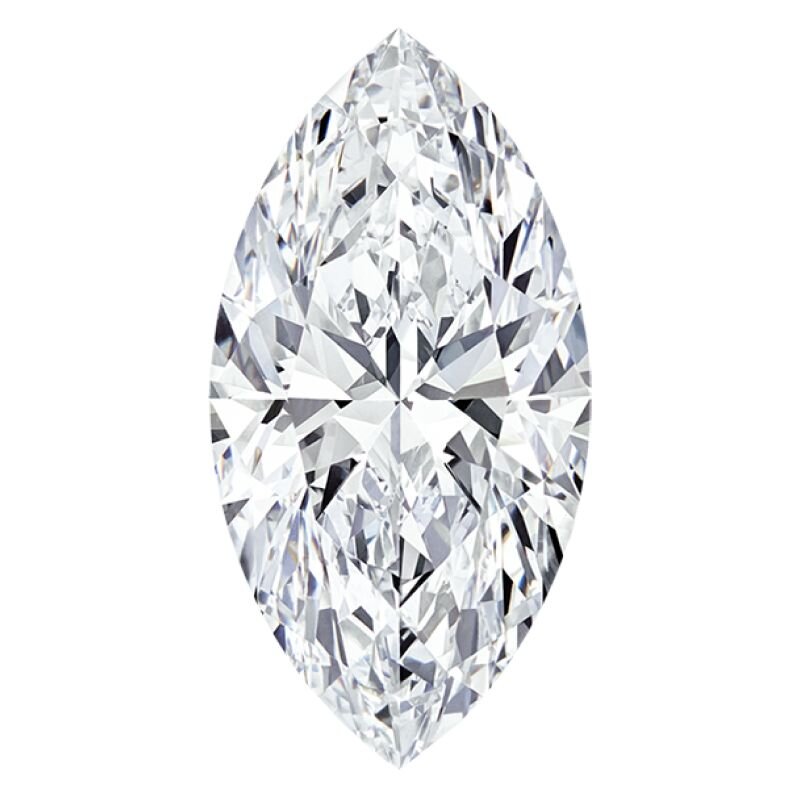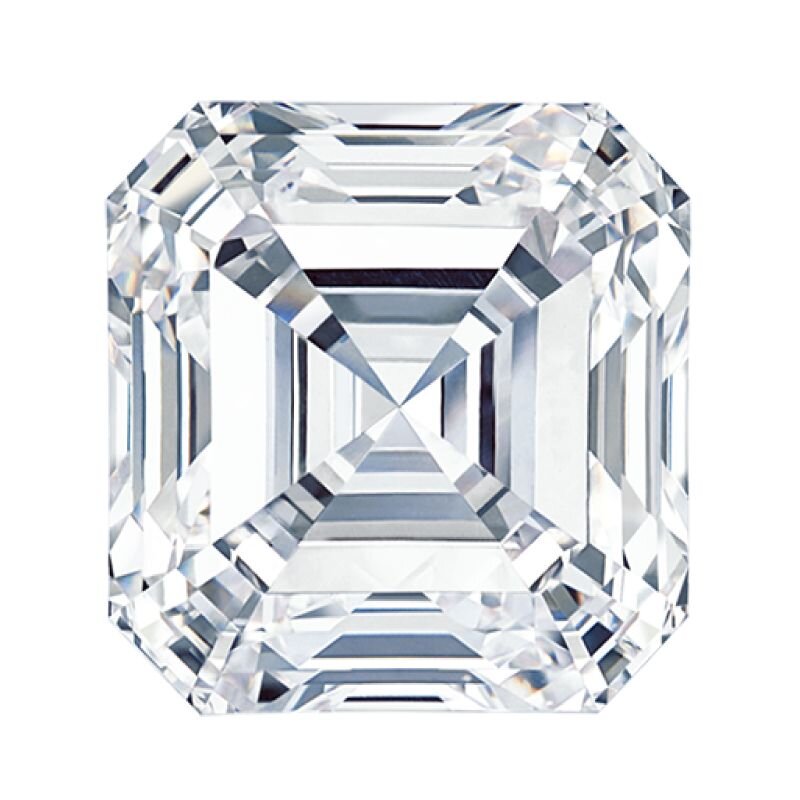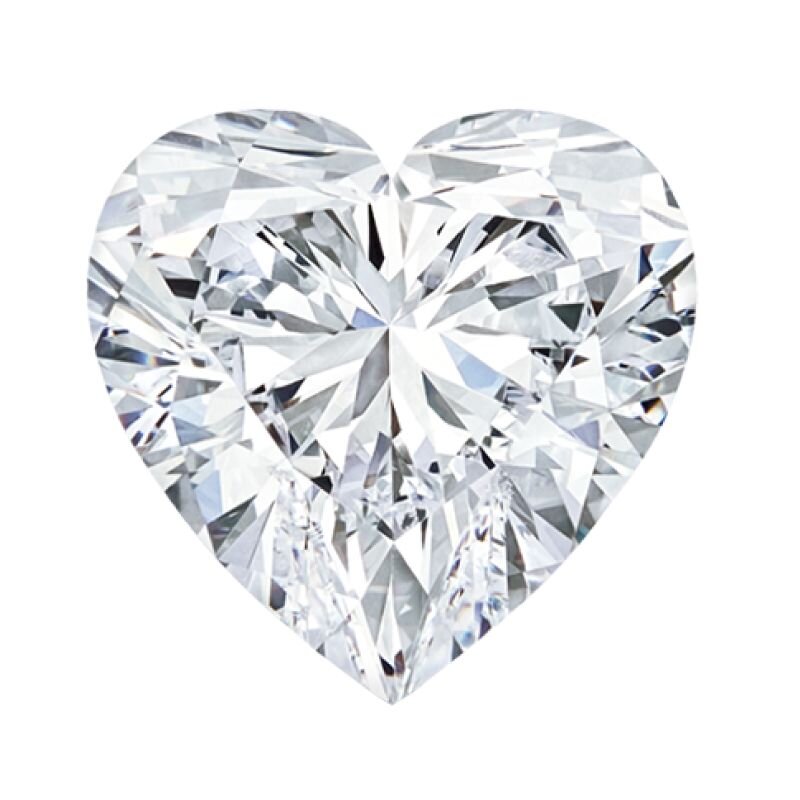
4 C’s of Diamonds Guide
This guide explores the characteristics that determine a diamond’s quality grade according to the industry standards in cut, color, clarity, and carat.
4 C’s of Diamonds Charts
Created by the Gemological Institute of America (GIA) in the 1940s, the 4 C's — cut, color, clarity, and carat — serve as the universal standard for assessing diamond quality. Each C represents a distinct quality attribute, measured on its own scale:
- Cut: Graded from Excellent to Poor on the GIA scale and Ideal to Poor on the International Gemological Institute (IGI) scale
- Color: Graded from D (colorless) to Z (light yellow or brown)
- Clarity: Graded from Flawless (FL) to Included (I3)
- Carat: Measured in metric carats, where one carat equals 200 milligrams

Cut
Cut determines how effectively a diamond's facets interact with light, creating the gem’s signature brilliance and sparkle. Unlike other diamond characteristics that form during the growth process, cut quality results from the diamond cutter's skill and precision.
A masterfully cut diamond reflects optimal brilliance, disperses vivid fire-like colors, and creates dynamic sparkle patterns when moved (this is called scintillation).
The GIA grades diamond cut from Excellent to Poor based on proportions that maximize light performance. An Excellent cut diamond returns nearly all light that enters the gem, resulting in exceptional sparkle and visual impact. In contrast, a Poor cut allows light to escape through the pavilion (bottom), resulting in a dull appearance regardless of the diamond's other qualities.

Color
Diamond color refers to the absence of color, with completely colorless diamonds being the most valuable and rare. The GIA color grading scale ranges from D (colorless) to Z, with each letter grade representing a subtle increase in color saturation.
Diamonds that fall outside this range—such as vivid pinks or blues —are classified as "fancy colored" and are evaluated differently.
Color becomes increasingly noticeable as carat weight increases, making color grade particularly important when selecting larger diamonds.
- Mounting style (yellow gold can make near-colorless diamonds appear whiter)
- Diamond size (larger diamonds reveal color more readily)
- Diamond shape (emerald and asscher cuts show more color than brilliant cuts)

10x magnification
Clarity
Clarity measures how free a diamond is from inclusions (internal characteristics) and blemishes (surface flaws). The GIA clarity scale ranges from Flawless to Included. Most diamonds fall somewhere in between, with inclusions that are microscopic and don't impact their beauty.
The impact of inclusions varies dramatically depending on their size, number, and position. The location of an inclusion matters as much as its size — an inclusion directly under the table (top facet) affects appearance more than one hidden near the girdle (edge). This makes each diamond's clarity assessment nuanced and highlights the value of viewing diamonds individually rather than relying solely on certification.
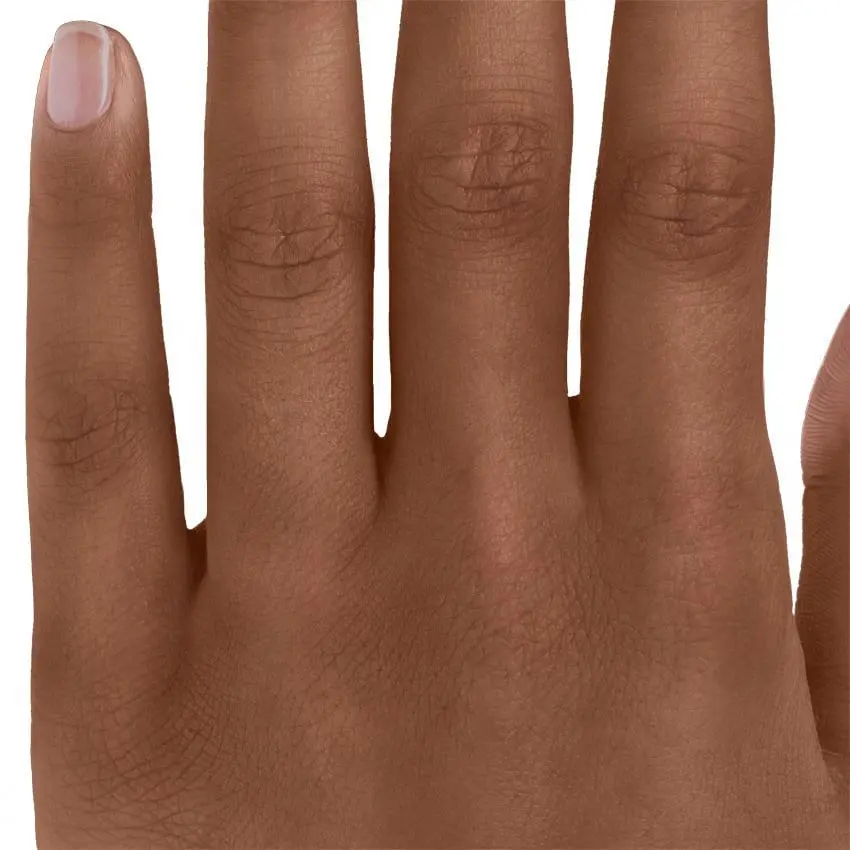
Actual Diamond Size on Size 6 Hand
Carat
Carat is a measurement unit that describes a diamond's weight, with one carat equaling 200 milligrams (roughly the weight of a paperclip). It's important to understand that two diamonds of identical carat weight can appear noticeably different in size depending on their shape and cut. A well-cut diamond maximizes surface area and light performance, often appearing larger than a poorly cut gem of equal weight.
For maximum value, consider diamonds just below popular weight thresholds (0.9 instead of 1.0 carat, 1.9 instead of 2.0 carats), where prices often drop significantly without a perceptible difference in visual size.
Diamond Shape
Shape refers to a diamond's outline when viewed from above and should not be confused with cut, which describes the gem's facet arrangement. The most popular shape remains the round brilliant, and any non-round shape (such as emerald, marquise, oval, or princess) is considered a "fancy shape."
Each shape provides distinct benefits: emerald cuts produce an elegant "hall-of-mirrors" effect, oval and marquise shapes can make fingers appear slimmer, and princess cuts offer brilliant sparkle in a contemporary square silhouette.
Beyond appearance, shape selection involves practical considerations:
- Price (fancy shapes typically cost less than round brilliants of comparable quality)
- Durability (pointed corners in marquise, pear, and princess cuts benefit from protective settings to prevent chipping)
- Visual impact ( elongated shapes like oval and marquise often appear larger per carat than round brilliants due to their greater surface area)
Diamond Size
Diamond size — distinct from carat weight though often mistakenly used interchangeably — refers specifically to a gem's physical dimensions and visual presence, most commonly measured in millimeters across the widest points.
When evaluating size, consider actual millimeter measurements rather than relying solely on carat weight. A standard 1-carat round brilliant typically measures about 6.5mm in diameter, while a well-cut oval or marquise of the same weight may appear larger due to their elongated shape and greater spread.
For engagement rings, the setting style further influences perceived size — halos (small diamonds surrounding the center gem) can make a diamond appear larger, while cathedral settings elevate the gem for greater prominence.
Types of Diamonds
Natural Diamonds
Natural diamonds form deep within the Earth under extreme conditions of heat and pressure over billions of years. They are comprised of nearly 99.95% carbon — making diamonds the only gemstone constructed of a single element. They are the hardest naturally occurring materials found on Earth and gem-quality diamonds are one of the most sought-after. Because of their limited quantity, natural diamonds have been cherished for their enduring value and passed from generation to generation.
Lab Diamonds
Lab diamonds are optically, chemically, and physically the same as natural diamonds. Their difference lies only in their origins — natural diamonds form within the Earth, and lab diamonds are grown by professionals with specialized equipment. Another difference is cost; as lab-grown diamonds are less rare than natural diamonds, they often come at a much more accessible price. Do you think you can tell the difference between lab-grown and natural diamonds just by looking? Test your eye with these side-by-side images.
4 C’s of Diamonds Tips: Finding Your Perfect Combination
Finding your dream diamond requires balancing the 4 C’s with your personal priorities. Here are a few tips to help guide your decision:
1. Master the 4 C's. To discover the ideal diamond for you, develop an understanding of how each factor affects a diamond's appearance and value. Then, determine which characteristics matter most to you personally. If exceptional brilliance is your priority, emphasize cut quality above all else. If impressive size makes the greatest impact for you, you might strategically compromise on color, cut, or clarity to get a greater carat weight. Remember that there's no universally "correct" combination — your aesthetic preferences should guide the way.
2. Target value "sweet spots". Certain grade combinations offer superior value by delivering an excellent appearance without commanding premium prices:
- Color: H-J diamonds present exceptional value, appearing near colorless to the naked eye.
- Clarity: Depending on carat weight and shape, VS2-SI1 grades can appear "eye-clean" without the substantial premiums of higher clarity grades.
3. Select your signature shape. Round diamonds offer unmatched brilliance and traditional appeal, but typically command higher prices than fancy shapes, which can provide better value and a distinctive appearance. Choose the shape that resonates with your personal style, whether you're drawn to timeless rounds or the unique character of fancy shapes like oval, cushion, or emerald.
4. Ensure proper certification. Your diamond should come with a comprehensive grading report from a respected independent laboratory such as GIA, IGI, HRD, or GCAL. These certificates verify your diamond's authenticity and provide objective documentation of its quality characteristics. Please note that all Brilliant Earth center stones are certified.
